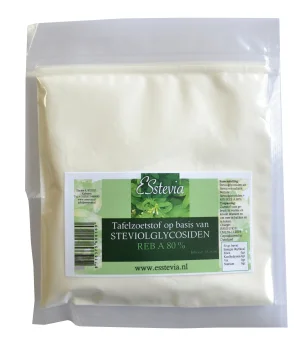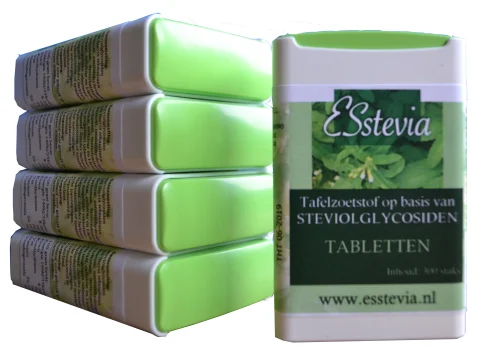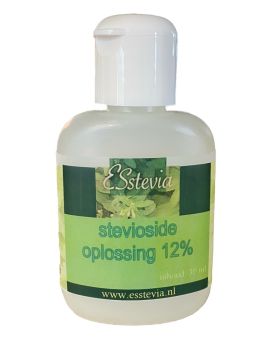ESstevia is the specialist in pure Stevia
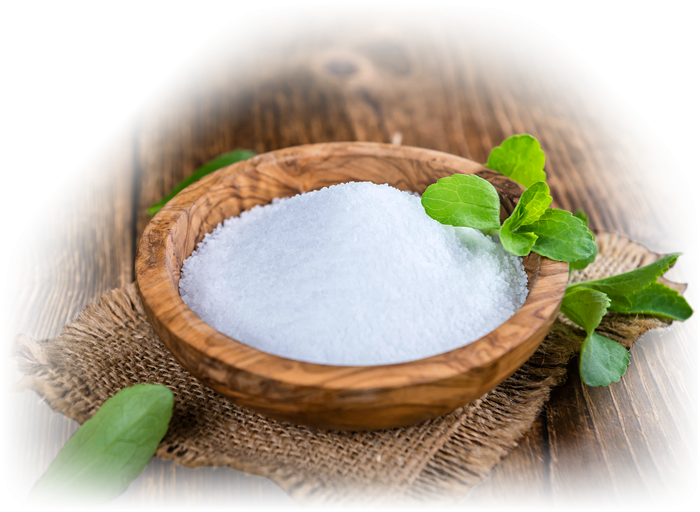
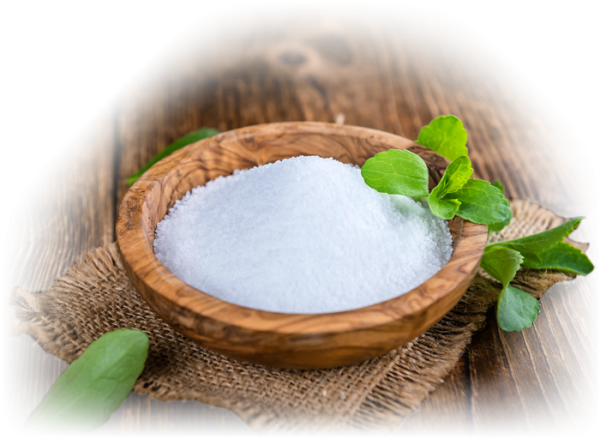
ESstevia offers you its “sweeteners of the future” of natural origin and very high quality.
Pros Steviol glycosides:
-
No sugar
-
No calories
-
No carbohydrates
-
No effect on blood sugar levels
This makes it a very suitable sweetener for diabetics. People who want to lose weight can also use steviol glycosides without any worries. Deliciously sweet but without the negative effects.
This makes it a very suitable sweetener for diabetics. People who want to lose weight can also use steviol glycosides without any worries. Deliciously sweet but without the negative effects.
Pure steviol glycosides
ESstevia is a specialist in pure steviol glycosides and since the European approval of steviol glycosides in 2011, its development has of course not stood still!
Eleven steviol glycosides are permitted as sweeteners in the EU. They are stevioside, steviolbioside, rubusoside, dulcoside A, rebaudioside A, B, C, D, E, F and M.
Among the first steviol glycosides approved by the EU in 2011, stevioside pioneered stevia-based sweeteners. Stevioside was the first because it is the most abundant steviol glycoside in stevia leaves. The problem with stevioside is that it has a bitter aftertaste and a licorice-like aftertaste.
But then the researchers discovered stevia plants that stood out from the crowd. They had a higher proportion of the steviol glycoside rebaudioside A, which tastes better than stevioside and is also twice as sweet. That opened up commercial opportunities for reb A, which is the most widely used steviol glycoside today.
Since reb A is sweeter and tastes better, it is easier to use. In addition, there are methods to mask the residual bitterness, as well as the licorice-like aftertaste.
Reb A was a big step forward for steviol glycosides as a sweetener. But it was soon discovered that the purest forms of reb A didn't always taste the best. It started the hunt for the others.
A new alternative
Researchers discovered steviol glycosides rebaudioside D and M (reb D and reb M). Scientists had known about these substances for some time, but it was only now, after it was approved in the EU in 2017, that it became a real alternative in the food industry.
Reb D and M have more glucose units linked to steviol.
Steviol glycosides are the sweet components of the leaves of the stevia plant. They consist of the substance steviol, which is bound to various glucose residues via so-called glycosidic bonds. For example, stevioside has compounds with three glucose groups and reb A up to four. Reb M has a total of six glucose parts. The high number of glucose units is part of reb M's explanation of good taste. Studies show that more glucose units produce more sweetness and less bitterness.
ESstevia supplies steviol glycosides pure in powder form or as a solution in water. The pure powder is amazingly sweet (about 300x sweeter than sugar) and suitable for sweetening hot and cold drinks, baking and cooking.
Liquid is useful in hot and cold drinks such as coffee, tea, yogurt, but also in smoothies or jam. The sweets are there for hot drinks. GrooVia crystal is available for baking with steviol glycosides. It resembles sugar and is even a crystal. In addition to these deliciously sweet products, ESstevia supplies many other stevia products.






